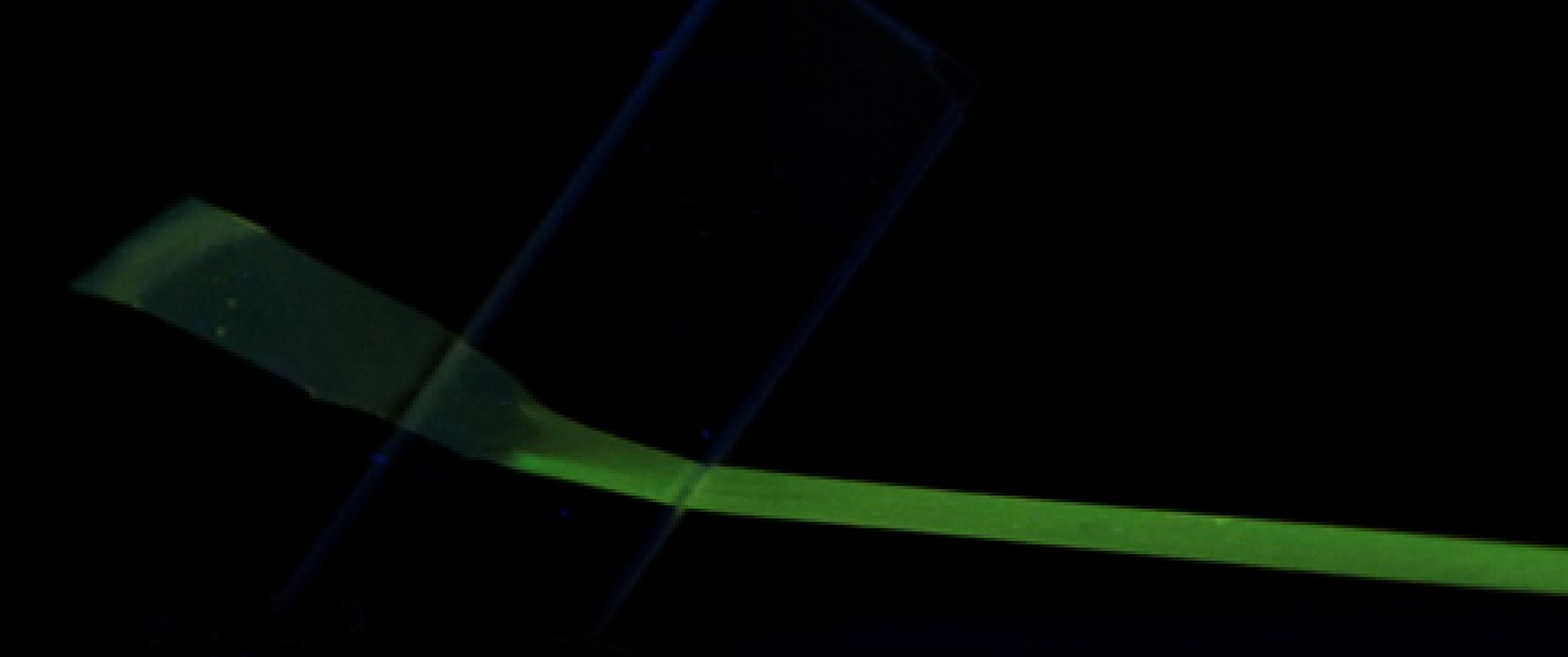Read more
Biological processes, such as cell-cell contacts, cell motility or even haptic perception (touch) all rely on the conversion of mechanical stimuli into chemical energy. Building on our expertise in the field of mechano-responsive polymers, we are exploring a new family of polymeric materials that translate mechanical forces into chemical reactions. These reactions, in turn, are used to bestow polymers with unusual and previously unavailable functionalities, such as mechanical morphing, mechanically induced generation of light, mechanically controlled cell growth, auto-lubricating behavior, and the ability to release small molecules such as drugs, fragrances and antiseptics.
Current research efforts include the design of new mechanically responsive motifs or “mechanophores”, the development of a predictive understanding for the relationships between the connectivity of such mechanophores with a matrix polymer, the morphology and mechanical properties of the system, and the mechanoresponse. Several mechanophores that rely on either homolytic (radical formation) or heterolytic cleavage of covalent bonds are being studied in this context. In parallel, non-covalent mechanophores based on excimer-forming dyes, cavitands, and supramolecular motifs such as metal-ligand complexes are being developed.
Selected research examples
Metal-ligand complexes are particularly promising for mechanochemical active systems as they offer a great opportunity to control the strength of the complex through the metal-ligand interaction. Recent results (J. Am. Chem. Soc. 2014, 136, 10493) showed that these metal-ligand complexes are mechanoresponsive in both solution as well as in the solid state. Currently, the details of these materials are under investigation on different length scales, ranging from the single-molecule level to macroscopic polymer films.
Hydrogen-bonding supramolecular binding motifs can be readily employed to derivatized dyes that display mechanoresponsive luminescent behavior. While hundreds of such dyes are known (Adv. Mater. 2016, 28, 1073), they generally do not display any useful mechanical properties. We have demonstrated that this can be overcome by introducing self-complementary hydrogen-bonding groups to promote the self-assembly of an excimer-forming cyano-substituted oligo(p-phenylene vinylene) derivative into a supramolecular polymer (J. Am. Chem. Soc., 2017, 139, 4302).
Novel covalent mechanophores are explored to prepare polymers that yield a tangible optical response to a mechanical stimulus. In particular, we focus on self-reporting materials that display a mechanically-triggered change of the fluorescence emission properties.
Image gallery
Main investigator
Involved people
- Related publications
- Related projects
Projects of SCHRETTL Stephen
Projects of WEDER Christoph







 GHIELMETTI Alyssa
GHIELMETTI Alyssa





